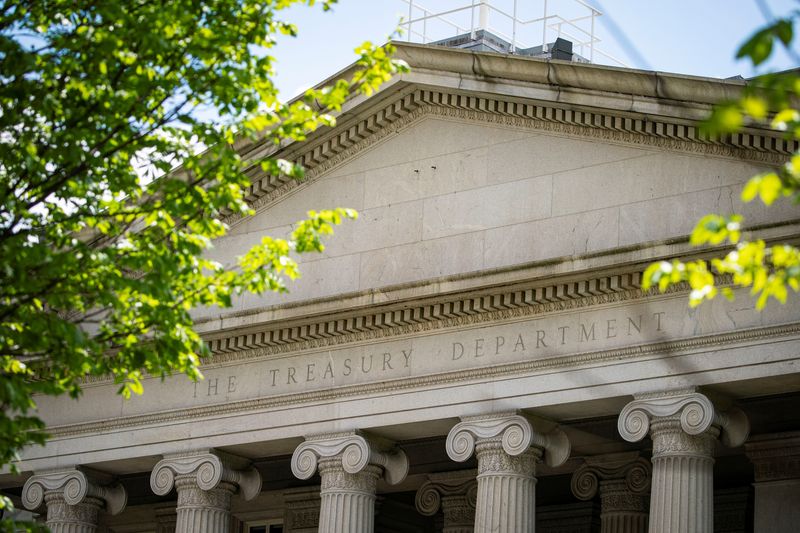US posts August budget surplus after student loan cost reversal
2023.09.13 16:22

© Reuters. The Treasury Department is pictured in Washington, U.S., April 25, 2021. REUTERS/Al Drago
By David Lawder
WASHINGTON (Reuters) -The U.S. government posted a rare August surplus of $89 billion due to a $319 billion reversal of costs from President Joe Biden’s student loan forgiveness plan after the Supreme Court struck down the program in June, the Treasury Department said on Wednesday.
The August surplus – the first for that month since 1955 – compares to a year-earlier deficit of $220 billion. Receipts last month totaled $283 billion, down 7% or $21 billion from a year earlier, while outlays came to $194 billion after the student loan reversal, down 63% or $329 billion.
The Biden administration last year had taken an upfront charge of $430 billion against fiscal 2022 budget results to recognize the present value of costs for the plan to forgive up to $20,000 in loans for millions of student borrowers, a move that fulfilled a Biden campaign promise.
But the Supreme Court’s conservative majority struck down the plan as unconstitutional without the consent of Congress, dealing the Democratic president a serious blow. After nearly a three-year moratorium due to the COVID-19 pandemic, student loan monthly repayments are due to resume Oct. 1. Biden, however, has ordered modifications to a new income-based repayment program that will relieve some low-income workers from having to make payments.
With one month to go before the fiscal 2023 year ends on Sept. 30, the government’s year-to-date deficit totaled $1.524 trillion, a 61% increase over a $946 billion budget gap for the same period of fiscal 2022.
The 11-month deficit was almost as much as the White House’s latest forecast of a $1.543 trillion deficit for the full fiscal year, marking the return of rising U.S. deficits after declines during Biden’s first two years as president.
Fiscal year-to-date receipts totaled $3.972 trillion, down 10% or $434 billion from a year earlier, primarily due to lower non-withheld individual income tax receipts, higher tax refunds as the Internal Revenue Service churned through a huge backlog of unprocessed paper tax returns, and far lower Federal Reserve earnings due to higher interest rates.
Year-to-date outlays totaled $5.496 trillion, up 3% or $142 billion, partly reflecting the student loan reversal. The Treasury’s net interest cost for the period hit a record $808 billion, up 19% or $130 billion from a year earlier.
However, a Treasury official said the nominal interest cost was not a record as a share of Gross Domestic Product. It was higher as a share of GDP throughout the 1980s and 1990s, he added.
The weighted average interest rate on U.S. Treasury debt was 2.92% in August, up from 1.97% in August 2022.








